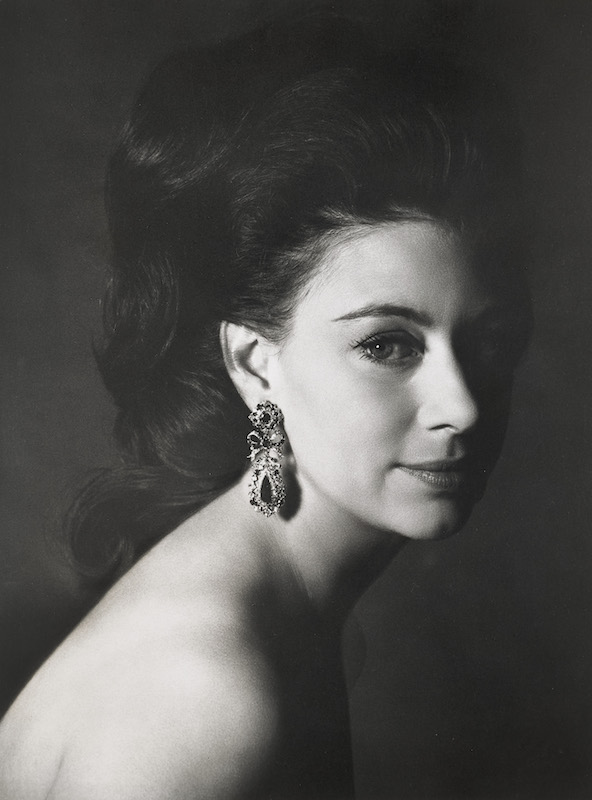Royal Portraits: A Century of Photography at The King’s Gallery (formerly knows as The Queen’s Gallery), Buckingham Palace, opens today, and it’s an exhibition you won’t want to miss. Spanning a century of royal portrait photography, it offers a captivating look into the lives of the British Royal Family through more than 150 vintage prints, proofs, and archival documents, many of which are on public display for the first time.
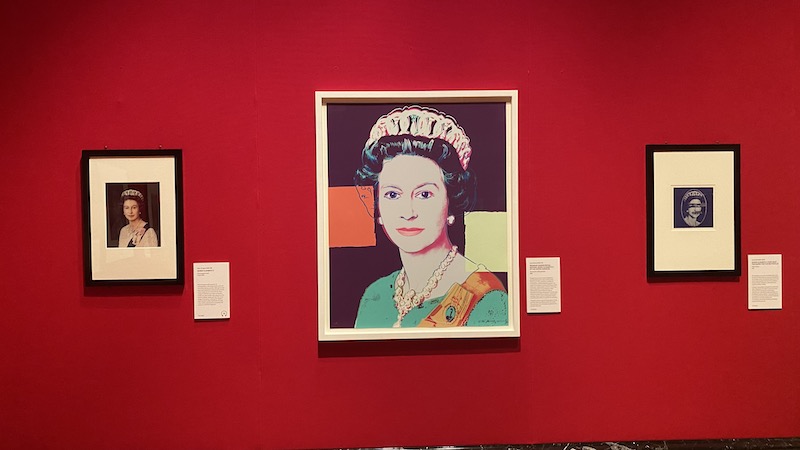
Curator Alessandro Nasini has curated an exhibition that features some of the most iconic royal photographs taken by celebrated photographers such as Dorothy Wilding, Cecil Beaton, Annie Leibovitz, David Bailey, and Rankin. These photographs are the original works produced by the photographers, offering an authentic glimpse into the evolution of royal portraiture from the 1920s to the present day.
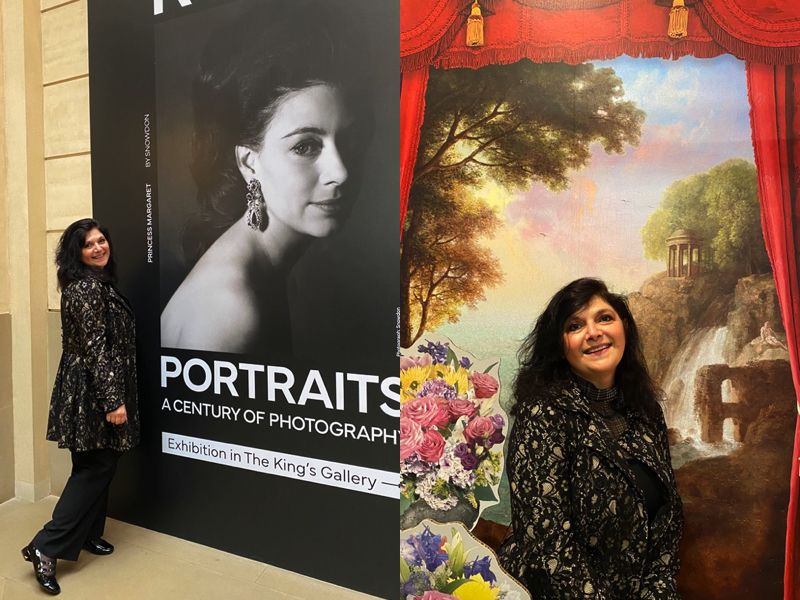
One of the standout pieces is the earliest surviving colour photograph of a member of the Royal Family. Taken in 1935 by Madame Yevonde, a pioneer of colour photography, it shows Princess Alice, Duchess of Gloucester, on her wedding day. This pioneering work highlights the early days of colour photography and Yevonde’s significant role in its development.
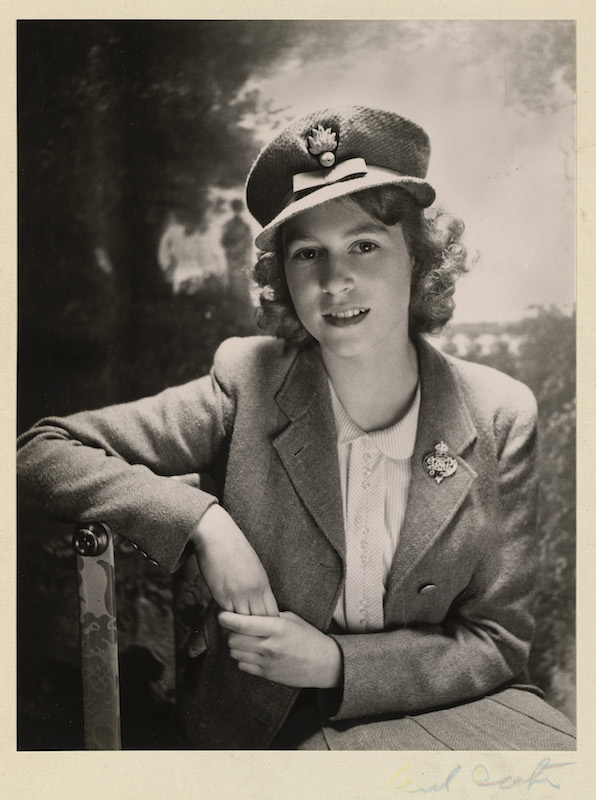
Cecil Beaton, Princess Elizabeth, 1942
Unreleased wartime images by Cecil Beaton are also featured, demonstrating how King George VI and Queen Elizabeth used photography to project stability and hope during World War II. One striking image shows the royal couple inspecting bomb damage at Buckingham Palace in 1940, smiling comfortingly at each other amidst the debris. Another from 1943, taken at Royal Lodge in Windsor, portrays the family gathered around the King’s desk with Princesses Elizabeth and Margaret, conveying a reassuring sense of domesticity and calm.
Beaton, who photographed the Royal Family over six decades, also captured Queen Elizabeth II’s Coronation in 1953. Visitors will see a contact sheet of proofs from this historic event, alongside a note from Martin Charteris, the Queen’s Assistant Private Secretary, advising Prince Philip on which images should be sent as personal mementos. The photograph eventually sent to Queen Elizabeth The Queen Mother, signed by Queen Elizabeth II, Prince Philip, and Cecil Beaton, is also on display.
Royal Portraits beautifully juxtaposes official portraits with more intimate family moments. A never-before-seen image taken by Lord Snowdon, Princess Margaret’s photographer husband, shows four royal mothers — Queen Elizabeth II, Princess Margaret, Princess Alexandra, and the Duchess of Kent — holding their newborn babies in 1964. This touching photograph was a personal token of thanks to Sir John Peel, the royal obstetrician who delivered all four babies within two months. Accompanying it is a handwritten letter from Princess Margaret to her sister, asking ‘Darling Lilibet’ to sign a print ‘as a souvenir of an extraordinary two months of delivery’.
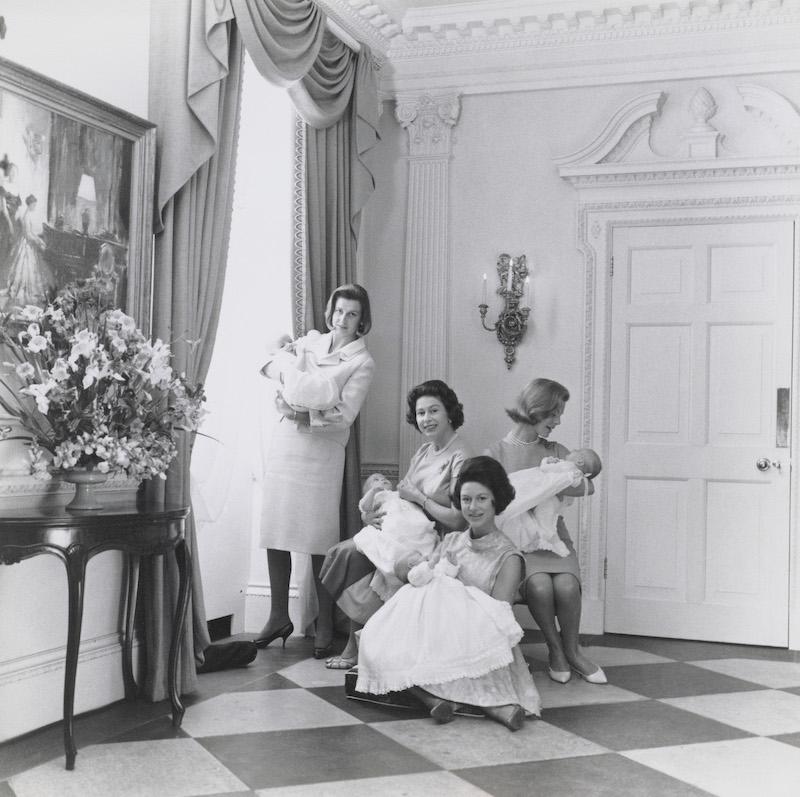
Left – Snowdon, Group of royal mothers with their babies, 1964. Credit Photograph Snowdon. Right – Princess Margaret, Letter to Queen Elizabeth II accompanying photographs, 1965. Credit- Royal Collection Trust – All Rights Reserved.
Birthday portraits are another highlight. Cecil Beaton’s charming 25th-birthday portrait of Princess Margaret, dressed in an evening gown with her dog Pippin in her lap, captures a playful side of the princess. Another treasure is a previously unseen contact sheet by Norman Parkinson, showing the late Queen and Princess Margaret laughing and talking during a sitting to mark their mother’s 80th birthday.
Royal Portraits don’t shy away from more contemporary works either. Paolo Roversi’s 40th-birthday portrait of Kate, Princess of Wales, is displayed alongside an 1864 portrait of Alexandra, Princess of Wales, by Franz Xaver Winterhalter, offering a striking visual comparison.
The Queen of Sex Pistols
Modern innovations in photography are showcased with bold and playful examples like Rankin’s 2001 photograph of a smiling Queen Elizabeth II against the Union Flag, Polly Borland’s Golden Jubilee portrait of the Queen set against a glittering gold backdrop, and Andy Warhol’s 1985 portrait of Her late Majesty, sprinkled with diamond dust to make it sparkle in the light. The Elizabeth II 1985 screen-print is based on a photo by Peter Grugeon, which was released in 1977 to mark the Queen’s Silver Jubilee. This was the same photo the Sex Pistols defaced on the sleeve of their hit single ‘God Save the Queen’.
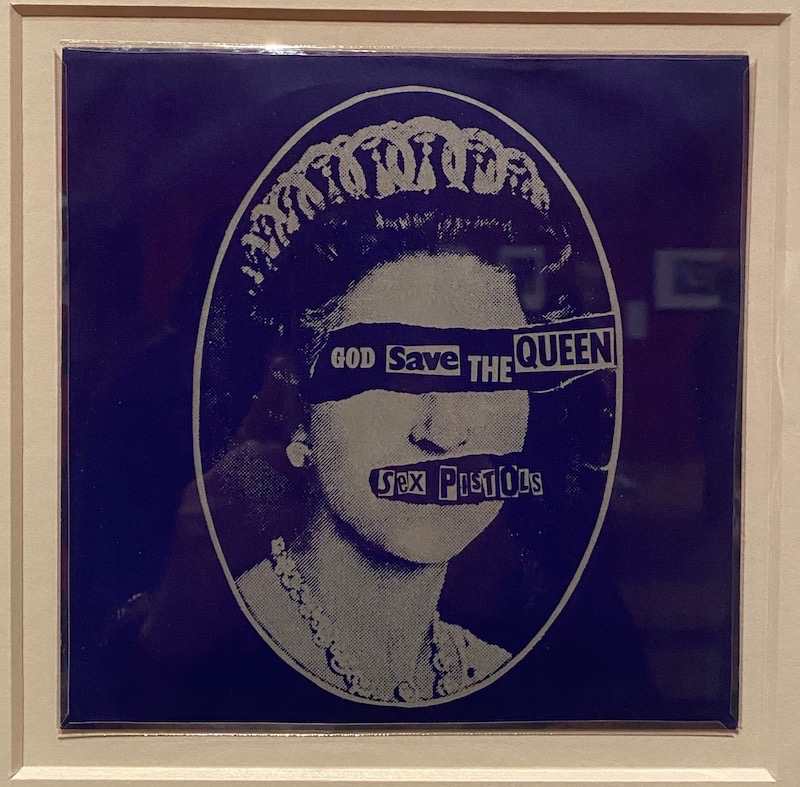
Sex Pistols album cover of anti-royalist song “God Save the Queen”
The iconic Sex Pistols album cover and their rebellious, anti-royalist song “God Save the Queen,” symbolises a cultural clash and has become a symbol of punk rock defiance. The Sex Pistols’ use of Warhol’s depiction of the Queen, combined with defaced ransom note-style lettering, was a bold statement against the establishment and the monarchy. Released during the Queen’s Silver Jubilee in 1977, the song and its provocative artwork were seen as a direct challenge to the British establishment, causing widespread controversy and even leading to a ban by the BBC. This artistic rebellion encapsulated the angst and disillusionment of a generation, cementing the song and the image as enduring icons of punk rock defiance.
Princess Margaret like you’ve never seen her before
For those interested in the technical side of photography, there is a dedicated room that traces the development of the medium from its inception. Starting with the first successful photograph by Joseph Nicéphore Niépce in 1826, the exhibition covers the evolution from daguerreotypes in 1839 to the introduction of roll film by George Eastman in 1888, and the revolution brought about by digital photography and smartphones in the late 20th and early 21st centuries.
Family fun
Families visiting the exhibition will receive a booklet filled with activities to keep kids entertained, ensuring a fun and educational experience for all ages. Additionally, the exhibition’s free multimedia guide, narrated by Dame Joanna Lumley, features contributions from royal photographers Hugo Burnand, Rankin, and John Swannell. Burnand shares behind-the-scenes stories of taking the official Coronation portraits of Their Majesties The King and Queen on 6 May 2023, including cycling to the Palace to avoid roadblocks and getting soaked in the rain.
A little provocative note to end on
I was surprised to find that the Queen’s Gallery, which I have often visited in the past, has been renamed The King’s Gallery. This public art gallery at Buckingham Palace first opened its doors during the reign of Elizabeth II in 1962, showcasing works from the Royal Collection on a rotating basis. Renaming it feels somewhat disrespectful, considering its history. Such a change undoubtedly involved significant expenditure. Was it really necessary? It was originally inaugurated by Queen Elizabeth, so why change it now?
The good news
Royal Portraits is the first exhibition to open at the newly renamed The King’s Gallery. To mark the occasion, Royal Collection Trust has launched a new scheme offering £1 tickets to those on Universal Credit and other named benefits, available for this exhibition between 17 May and 8 July. The King’s Gallery will also continue to offer concessionary rates, including reduced tickets for Young People, and the option to convert standard tickets bought directly from Royal Collection Trust into a 1-Year Pass, allowing free re-entry for 12 months.
Whether you’re a history buff, photography enthusiast, or just looking for an engaging family activity, Royal Portraits: A Century of Photography at Buckingham Palace offers a rich and multifaceted exploration of the art of photography and the British Royal Family. Running until 6 October, this exhibition provides a picture-perfect way to look into royal history and the evolution of photographic art. Just remember that photo taking is not permitted!
Related articles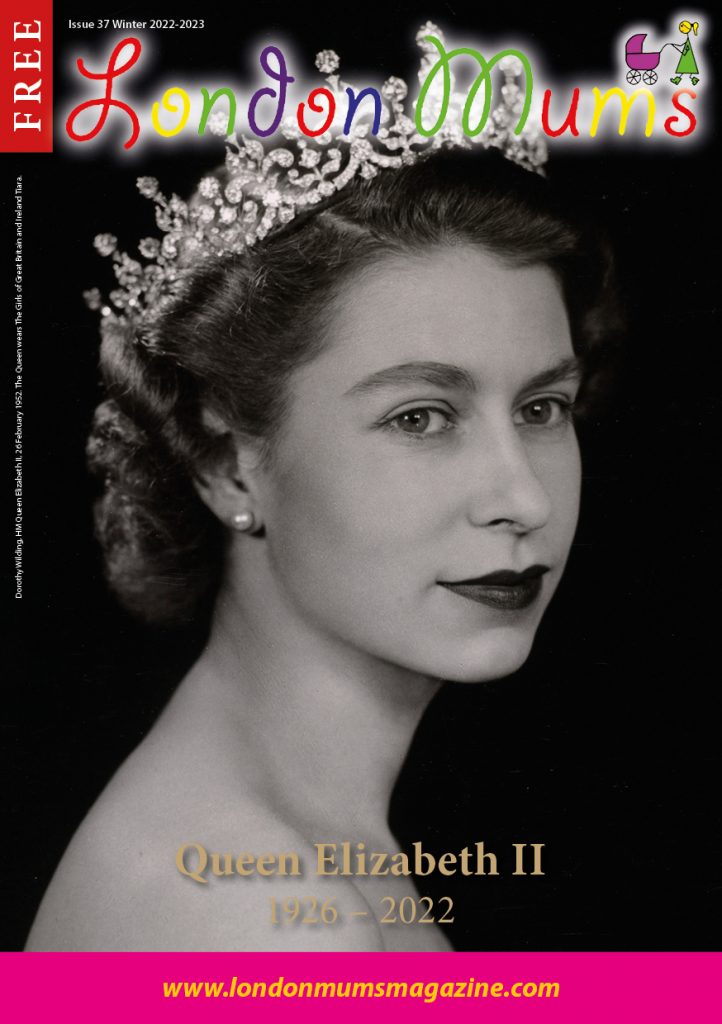
https://new.londonmumsmagazine.com/wp-content/uploads/2022/11/LONDON_MUMS_2022_Issue_37_R1.4-LR_Spreds.pdf



